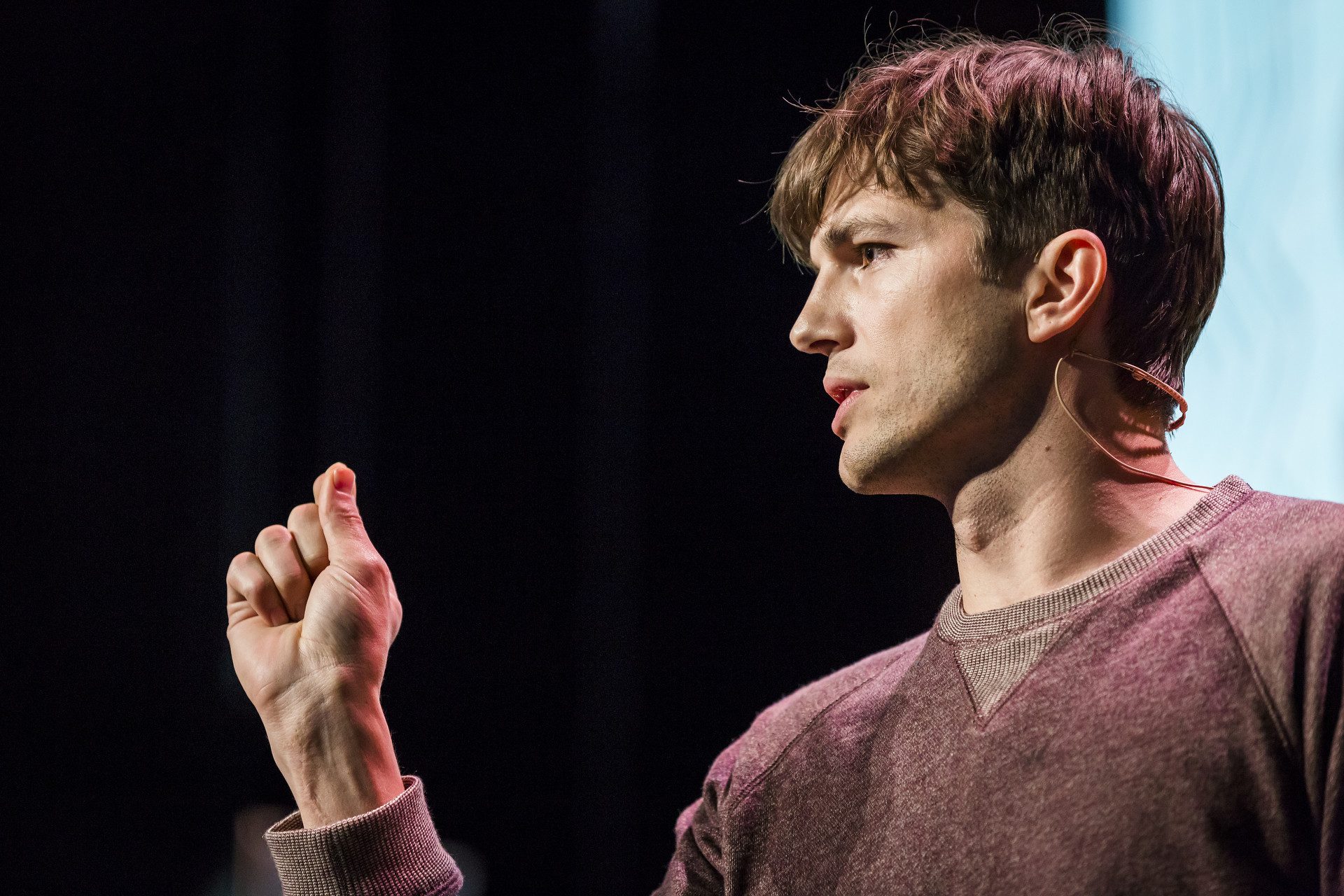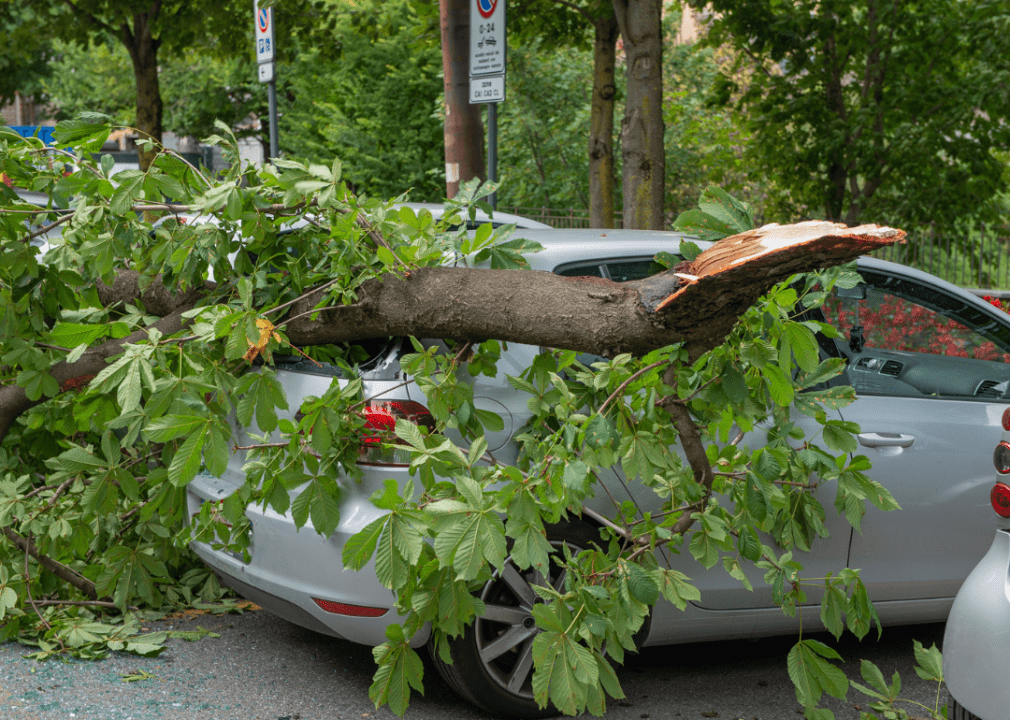By John Carey for the Proceedings of the National Academy of Science.
Broadcast version by Suzanne Potter for California News Service reporting for the Pulitzer Center-Public News Service Collaboration.
Methane, one of the most potent greenhouse gases, is the major component of the biogas that seeps from countless landfills and wastewater plants. It makes sense, then, to prevent that methane from escaping into the atmosphere-indeed, hundreds of solid waste facilities across the United States have done so for decades, either flaring the biogas to burn off the methane or burning the biogas to generate electricity or heat. That gives off carbon dioxide, but still greatly reduces the greenhouse gas potential, as methane is 80 times more potent than CO2 over the first 20 years after emission.
But in recent years, government and industry have found a more profitable way to use that biogas. Taking advantage of government subsidies and using technologies that strip out the CO2 and other gases-for example, absorbing CO2 with chemicals called amines-companies turn it into pure methane that can be injected into regular natural gas pipelines and distribution networks, seamlessly blending with the chemically identical fossil natural gas. In Europe, this gas is generally called biomethane; in the United States, proponents have rebranded it as “renewable natural gas” (RNG) “to highlight the role that RNG could and should play in displacing meaningful volumes of conventional natural gas,” explains Dylan Chase, spokesperson for the Coalition for Renewable Natural Gas, an industry group.
A variety of interests are increasingly pushing for more RNG. Some environmental groups, scientists, and state governments see benefits in mitigating a potent greenhouse gas. Farmers see a new source of income. And for an oil and gas industry facing global efforts to phase out natural gas and other fossil fuels in the fight against climate change, RNG offers a possible reprieve-an opportunity to keep using the trillions of dollars’ worth of pipelines and other natural gas infrastructure operating. This, even as some interest groups question the “renewable” label.
So, just how green are RNG initiatives? Are they helping in the fight against climate change, or are they merely enabling companies and others to pull in profits and prolong the use of natural gas infrastructure-and even fossil natural gas? It depends, not surprisingly, on who you ask.
Harvesting Power
Methane is produced wherever microbes break down organic material in the absence of oxygen. As a result, the gas bubbles into the atmosphere from countless sources-natural ones, like wetlands or melting permafrost, and human-created ones, such as landfills, manure lagoons, and wastewater treatment plants.
People have collected and used biogas for more than a century. One of first known applications was in the late 1800s at a leper colony in Matunga, India, according to Aaron Smith, agricultural economist at the University of California, Davis (UC Davis). “They captured gas from septic tanks to run a gas engine for pumping sewage, and also for lighting and cooking,” he writes (1). In many developing countries, biogas is being promoted as a cleaner, safer fuel than wood or charcoal for heating and cooking (2).
To harness biogas, the basic idea is to seal up organic matter so that oxygen can’t get in and to allow bacteria to dine on the waste. Landfills are typically already covered with clay, plastic liners, or dirt, so the gases are collected by drilling wells into the mounds of waste and putting in pipes through which the biogas can flow, sometimes aided by blowers. On large dairy farms or other animal operations, a slurry of manure is funneled into a structure called an anaerobic digester, where microbes produce gas that is piped away.
Policy Driven
Making RNG economically viable, though, requires another ingredient: government policy. The biggest driver has been a California program called the Low Carbon Fuel Standard, first implemented in 2011. The policy offers credits for greenhouse gas emissions avoided in transportation fuels to lower the average carbon intensity of those fuels. By early 2019, the value of those credits had soared to nearly $200 per metric ton of CO2 (or its equivalent) avoided (3).
The program offers a financial incentive to process landfill gas and other biogas into methane and inject it into pipelines. But the subsidy is much larger for methane captured from anaerobic digesters on dairy farms than from other sources, because the program gives credit for the emissions avoided from manure lagoons. Since the dairy biomethane counts as negative emissions (not just low or zero emissions, as in landfill gas), its value has reached a sky-high level of more than $70 per million British thermal units (MMBTUs)-a value that has ranged from 8 to 20 times higher than the price of fossil natural gas. “Dairy farms say they can make more money peddling RNG credits to California than they do making milk, which is kind of crazy,” says Robert Howarth, professor of ecology and evolutionary biology at Cornell University and an expert in methane emissions.
These high prices have sparked a major boom in using manure and other waste to produce biomethane. In California, most of the more than 90 anaerobic digesters and methane capture systems now in operation have come online since 2019. And since anyone who injects biomethane into a pipeline that could conceivably connect to a California system linked to transportation can get California credits, the boom has reached across the United States.
California-based RNG company Brightmark, for example, is working with dairy farms in multiple states. “If you would’ve told me in 2016, when I founded the company, that we would now have more than 30 projects, I wouldn’t have believed it,” says Brightmark CEO Bob Powell. At one of Brightmark’s projects, a large dairy operation in the Finger Lakes region of New York State named Lawnhurst Farms, biomethane production is a “win-win-win for our farm, our community, and the environment,” states owner Don Jensen on the Brightmark website.
Some cities, meanwhile, are interested in harvesting biogas from food. It’s much more effective to keep food waste out of landfills by placing it into anaerobic digesters instead (4)-if, that is, it’s possible to collect it efficiently. Residents and businesses need to sort out the waste, and municipalities need to add curbside pickups, as a landmark California law that went into effect in 2022 requires cities to do, so the practice typically only makes economic sense in dense urban areas.
Rapid Growth
The California Low Carbon Fuel Standard isn’t the only policy supporting the RNG industry. Both the federal Renewable Fuel Standard and the recent Inflation Reduction Act also provide subsidies. And other cities, such as New York, are piloting special food waste collections and anaerobic digesters.
With the help of these government subsidies, both clean energy companies and the oil and gas industry are betting big on renewable gas. Back in 2011, eight companies and unions banded together to form the Coalition for Renewable Natural Gas, based in Sacramento, California. The group has now grown to 380 members, including universities, investors, and RNG developers, and major deals are being made. In December 2022, for instance, BP spent $4.1 billon buying RNG producer Archaea Energy. Shell bought Nature Energy in February for nearly $2 billion, and Chevron has formed a joint venture with Brightmark. The Coalition for Renewable Gas reports that 281 RNG facilities are in operation now in the United States, with another 180 under construction and 296 more being planned, up from just 5 n 2002. The Coalition also predicts that the renewable gas market will jump 7-fold (over 2020 levels) by 2030 and 27-fold by 2050 (5).
Phasing out fossil gas would leave oil and gas companies with massive stranded assets, so “renewable natural gas is very appealing,” explains Tristan Brown, director of the Bioeconomy Development Institute at SUNY College of Environmental Science and Forestry in Syracuse, New York. “It is a drop-in fuel, so they can re-use the existing infrastructure.”
Such policies and investments are good for the climate, some researchers argue. “They are doing more than anything else we’ve done to reduce biomethane emissions,” Brown says.
Yet, at the same time, the incentives for RNG raise a deep, high-stakes question about the best path forward for fighting climate change: whether (and for how long) we should continue to use gas at all, “renewable” or not. “The central debate is: Do we want to invest in maintaining the polluting gas system we have now, or do we want to fundamentally move off of combustion sources?” says Stephan Edel, coalition coordinator of NY Renews, a coalition of more 350 environmental, justice, faith, labor, and community-based organizations.
Faux Solution
Many scientists and environmentalists worry that widespread use of biomethane is misguided. The first issue is that the supply of RNG will always be limited. In some countries where per capita consumption of natural gas is much lower than in the United States, biomethane has greater potential as a replacement fuel. In the United Kingdom, for example, a recent study from the Green Britain Foundation shows that biomethane could compensate for 72% of natural gas consumption by using grass as a gas feedstock, according to coauthor Semra Bakkaloglu, an environmental and chemical engineer at Imperial College London (6).
That’s not the case in the United States. Even if it were possible to harness all of the country’s food waste, landfills, manure ponds, wastewater treatment plants, and perhaps even some energy crops for gas, the resulting biofuel could replace only a fraction of current natural gas consumption, with most estimates clustering around 10 to 15 percent. “There’s not nearly enough renewable natural gas,” says Mary Nichols, who chaired the California Air Resources Board from 2007 to 2020, when it developed and implemented the state’s Low Carbon Fuel Standard and other climate policies. And although synthetic renewable gas theoretically can be made by adding carbon to hydrogen produced from renewably generated electricity, the economic and practical hurdles of doing so are immense.
A second problem is that producing and using biogas may not be as clean and as climate friendly as its proponents claim. Just like fossil gas, it causes air pollution when burned. More important, emissions can occur at each step of the production process, from the landfill or anaerobic digester to the upgrading facility and the transport pipelines. Plus, the stuff left behind in the digesters-called the digestate-can continue to release gas after being taken out. “It doesn’t take much of the methane to slip through to be a significant contributor to planetary warming,” warns Cornell’s Howarth.
Worrying Emissions
In fact, when Bakkaloglu measured methane emissions at or near renewable gas plants in the United Kingdom, “almost every facility we visited was emitting methane, which is worrying,” she says. Overall, she found, methane emissions were more than two times higher than previously estimated, though she notes that with better monitoring and operational practices, those emissions could be significantly reduced (7).
In addition, making RNG is costly. “Anaerobic digesters could be more expensive than the value we get from stopping those methane emissions,” says UC Davis’ Smith. He calculated that in 2021, it cost $294 to get $68 worth of gas from cow manure (1), starkly illustrating how dependent the entire renewable gas enterprise is on government subsidies. In fact, the pace of investment in renewable gas has slowed over the past year, following a drop in the value of the California credits to only about $60 per metric ton of CO2-equivalent, down from the peak of $200.
Smith and others argue that there may be cheaper and better ways to reduce methane emissions than making RNG and injecting into pipelines. Most of the emissions from milk and beef production-as much as 80%, Howarth says-belch out from the cows themselves; those emissions can be cut by 50% or more with feed additives that inhibit methane production or modify the fermentation process in cows’ guts (8). Manure could also be handled differently, Smith suggests. It could be dried and spread on fields or digested by worms, avoiding anaerobic conditions and, thus, methane emissions.
Small Role
These problems don’t mean that RNG should be shunned entirely. On the contrary, the consensus among scientists and environmentalists is to collect as much biogas as possible from dairy farms, landfills, wastewater treatment plants, and other sources to cut methane emissions. But these sources should aim to use it on-site or close by, such as in co-located industries. And, perhaps even better, use it in fuel cells, which use electrochemical reactions to generate electricity, to avoid local air pollution from burning the gas. “We argue that’s the best use,” Howarth says. In such a scenario, biogas and RNG gas could play small, yet meaningful, roles in the global decarbonization effort.
But the debate over RNG is part of a larger policy fight over conventional natural gas, which includes the controversial idea of banning natural gas in new buildings to accelerate a transition to electric power. In 2019, Berkeley, California, was the first city to issue such a ban, against fierce opposition from the gas industry. That prohibition was tossed out by a federal court in April, but dozens of other municipalities, including New York City, San Francisco, San Jose, and Seattle, have followed suit, and in May, New York passed the first state ban. Such regulations could slow or reduce the use of natural gas, renewable or otherwise.
Meanwhile, there’s a move by some environmentalists and journalists to drop the term “natural gas” in favor of the more accurate “methane” or “methane gas,” which are viewed less favorably by the public, a recent study shows (9). “Natural gas,” they argue, is an industry-concocted term that makes methane seem less dangerous than it is.
Whatever the policies, experts like Nichols, now professor in residence at the Law School of the University of California, Los Angeles, argue that although RNG can play a role in greenhouse gas mitigation-particularly as a fuel or feedstock for industrial processes that are hard to electrify-ending the era of widespread use of natural gas remains a crucial milestone on the path to a lower-carbon world.
John Carey wrote this article for the Proceedings of the National Academy of Science.







